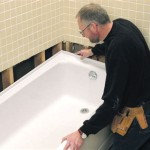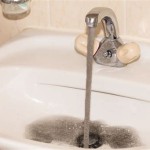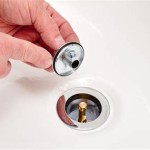Slow Drain In Bathtub: Essential Aspects You Need to Know
It's a scenario all too familiar: you step into the shower, eager to start your day, only to be greeted by a slowly draining tub. This minor inconvenience can quickly turn into a major headache, especially when you're running late or trying to conserve water. But don't despair! Identifying the cause of your slow drain in the bathtub and taking the appropriate steps to resolve it can be straightforward with the right information.
Causes of Slow Drainage
Before diving into solutions, it's essential to understand the potential causes behind a slow-draining bathtub. Common culprits include:
- Hair accumulation: Over time, hair strands can accumulate in the bathtub drain, creating a physical barrier that obstructs the flow of water.
- Soap scum and mineral buildup: Soap residue and minerals from hard water can form a sticky layer inside the drainpipes, gradually reducing water flow.
- Clogged P-trap: The P-trap is the U-shaped section of pipe beneath the drain. It acts as a barrier against sewer gases and can become clogged with debris, hair, or soap scum.
- Main drain blockage: In some cases, the issue may not be limited to the bathtub drain itself but extend to the main drain line serving the bathroom. This can be caused by tree roots infiltrating the pipes, debris buildup, or even collapsed pipes.
DIY Solutions
For minor drain clogs, DIY solutions can often prove effective. Here are a few methods to try:
- Drain snake: A drain snake is a flexible wire tool that can be inserted into the drain to dislodge hair or other small obstructions.
- Plunger: Using a plunger creates a suction effect that can help loosen clogs in the P-trap.
- Baking soda and vinegar: Pour 1 cup of baking soda down the drain, followed by 1 cup of white vinegar. Allow the mixture to foam and sit for 30 minutes before flushing the drain with hot water.
Professional Drain Cleaning
If DIY methods fail to resolve the issue, it's advisable to seek professional drain cleaning services. Plumbers can employ advanced techniques such as:
- Hydro-jetting: This involves using a high-pressure water jet to blast away clogs and debris.
- Camera inspection: A small camera can be inserted into the drainpipes to identify the exact location and nature of the blockage.
- Root cutting: If tree roots have infiltrated the drain line, plumbers can use specialized tools to cut and remove them.
Preventive Measures
To prevent slow drains in the bathtub in the future, consider adopting these simple yet effective measures:
- Use a drain strainer: This can help catch hair and other debris before they enter the drain.
- Clean the drain regularly: Pour a mixture of baking soda and vinegar down the drain monthly to dissolve soap scum and mineral buildup.
- Avoid pouring grease or oil down the drain: These substances can solidify and contribute to clogs.
- Inspect the P-trap periodically: Remove and clean the P-trap every few months to prevent accumulation of debris.
By understanding the causes of slow drainage in the bathtub, implementing DIY solutions, and embracing preventive measures, you can keep your bathroom drains flowing smoothly and avoid the inconvenience of standing in a puddle while trying to get ready for your day.

3 Causes Of A Slow Bathtub Drain Curt Jerry Sewer Service

How To Fix A Slow Draining Bathtub 3 Simple Diy Solutions

How You Can Fix A Slow Draining Drain On Your Own Call Ashton Plumbing
Bathtub Has Been Extremely Slow Draining Clogged For What Seems Like Years And All Methods We Ve Tried To Fix Draino Snakes Etc Are Inconsistent Any Permanent Solutions Quora

Slow Draining Bathtubs Here Are 4 Tips To Keep In Mind Bluefrog Plumbing Drain

How To Unclog A Bathtub Drain Homeserve Usa

How To Unclog A Bathtub Drain Without Toxic Chemicals

How To Fix A Slow Draining Tub Fischer Plumbing

How To Unclog A Shower Drain Without Chemicals Diy Family Handyman

How To Unclog A Slow Running Bathroom Sink Drain 10 Options







